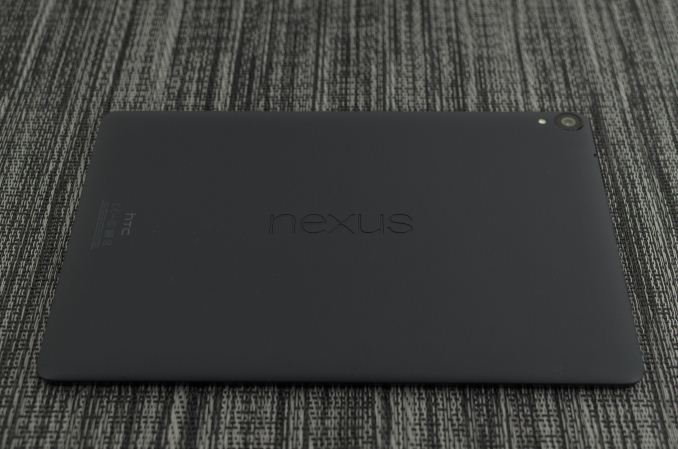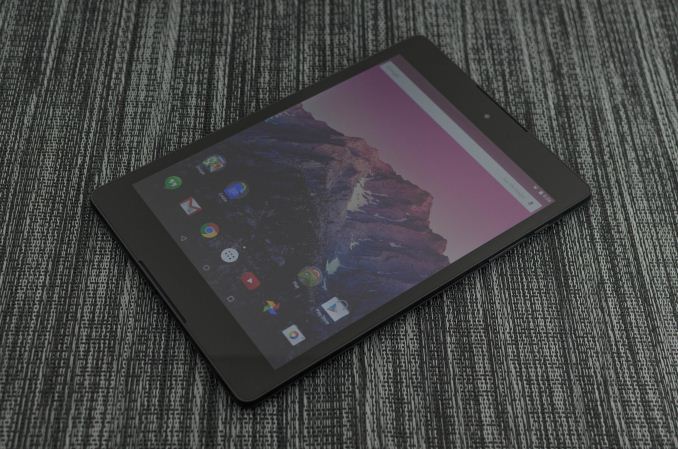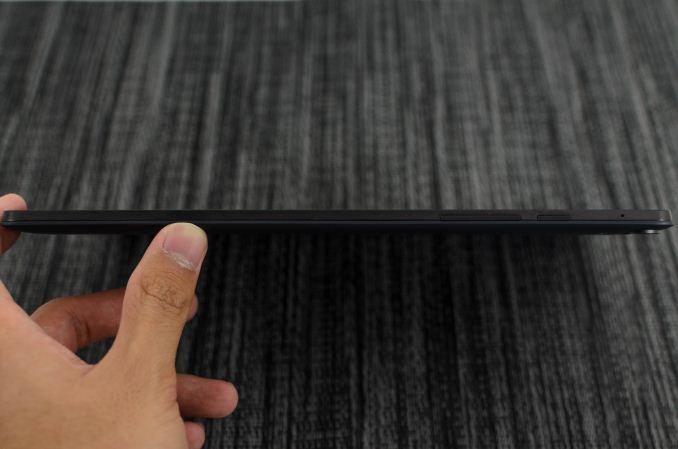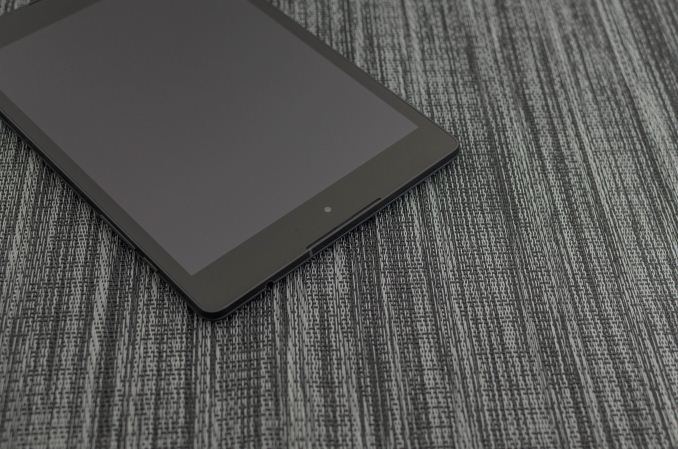Google Nexus 9: Preliminary Findings
by Joshua Ho on November 3, 2014 1:00 PM EST
For a few years now, Google has had a generally consistent tablet strategy. Instead of chasing after the ~10 inch tablet segment and focusing upon the high end, we’ve seen tablets closer to the ~7 inch display size at extremely low cost. While this has been an immensely successful strategy in driving hardware adoption, the formfactor made it possible for the tablet to be closer to a large phone than a small tablet. The flexibility of Android’s scaling system meant that an app designed for a phone worked acceptably well for a small tablet, even if the space efficiency was a bit poor. There’s no question that the Nexus 7 (2013) was and still is a great tablet, but even now it’s obvious that there’s a dearth of applications designed specifically for the larger display. The other issue is that of cost. With the Nexus 7 line, Google managed to integrate an incredible amount of hardware into a tablet priced well below the ~500 USD price point that the original iPad established. This is great for the consumer and no doubt great for Google, but the Nexus 7 line was good enough that there wasn’t much in the way of competition.
This brings us to the Nexus 9, Google’s attempt at changing the Android tablet space. From the start, this device seems to be intent on pushing the Android tablet to a more premium segment. Rather than a purely cost-optimized polymer design, we see the addition of an aluminum ring that runs around the side of the device, which definitely helps with in-hand feel. The tablet itself seems to have high-end aspirations as the launch platform for NVIDIA’s Tegra K1-64, which has two Denver CPU cores rather than the traditional 4+1 Cortex A15 setup, along with dual front-facing speakers and a large 9” display with 4:3 aspect ratio. I’ve included the basic specs in a spec sheet below, to avoid spending too much time going over the basics.
| Nexus 9 | |
| SoC | 2.3GHz 64-bit dual core Tegra K1 Denver SoC |
| RAM/NAND | 2GB LPDDR3 + 16/32GB NAND |
| Display | 8.9" 2048x1536 IPS LCD |
| Network | WiFi only or 2G / 3G / 4G LTE SKU |
| Dimensions | 153.68 x 228.25 x 7.95mm, 425g WiFi, 436g LTE |
| Camera | 8MP Rear Facing (IMX219) with F/2.4 aperture, 1.6MP FFC (OV9760) |
| Battery | 6700 mAh (25.46 Whr) |
| OS | Android 5.0 Lollipop |
| Connectivity | 802.11a/b/g/n/ac + BT 4.1, USB2.0, GPS/GNSS, NFC |
Unfortunately, in the case of the Nexus 9 while we can make some early observations the version of firmware that we received dates was built on August 29th, and in the time since it’s quite likely that there have been significant changes in all directions. We still don't have a newer build, so all the tests will be done on older firmware. The full review will have final numbers as it will be done using shipping firmware.
At any rate, the hardware of the Nexus 9 definitely fits the bill of a premium tablet. While for the most part every Nexus device in the past year has shared the same industrial and material design elements, HTC seems to have added a few extra touches to differentiate this product from other Nexus devices. The most obvious and prominent of these touches is the metal ring, which has a brushed texture similar to what we saw on the M8.
There are also dual front-facing speakers that flank the display, which are definitely great for video and music content when compared to a single speaker on the bottom or back of the device. However, for the most part the design is very much a Nexus device with its minimalistic design and soft-touch plastic back cover.













146 Comments
View All Comments
tuxRoller - Thursday, November 6, 2014 - link
ipad has some pretty serious music making apps. Both have some cad programs from autodesk.Lastly, browsers themselves can actually use that power. For instance, firefox via webgl + asm.js.
This is ignoring the coming push into servers.
toyotabedzrock - Monday, November 3, 2014 - link
Not when I can buy an i5 laptop for the price of the tablet.beginner99 - Tuesday, November 4, 2014 - link
No, an i3 runs circles around A8x or Tegra K1. It's just a stupid comparison because they also target a different market.darkich - Tuesday, November 4, 2014 - link
You're trolling??The A8X is ridiculously more impressive than any Core chip because of giving comparable processing power at about 30% of power, and probably far less than 50% of price.
And here's the thing - Apple AX chips are a prime candidate for future MacBook successors.
Speedfriend - Tuesday, November 4, 2014 - link
"The A8X is ridiculously more impressive than any Core chip because of giving comparable processing power at about 30% of power, and probably far less than 50% of price."You heard of a thing called Core M? Same TDP as A8x, single core geekbench 33% higher. GPU performance 2.5x? And on silicon that is smaller than the A8 let alone the A8X, so cost of manufacture is cheaper.
darkich - Tuesday, November 4, 2014 - link
Yeah I heard of Core M, that Uber fail chip that perfectly shows how badly screwed Intel is against Apple.It throttles tragically, has 30% lower performance than a Haswell U counterpart, and costs over $200.
darkich - Tuesday, November 4, 2014 - link
^ at least that is what the first actual Core M product reveals, that ischizow - Tuesday, November 4, 2014 - link
Core M is definitely in a class of its own in terms of performance, but I agree its not applicable in this discussion because of its price tag. We won't see it in a sub $600 device competing with these parts.darkich - Wednesday, November 5, 2014 - link
Definitely in a class of its own??Please back that claim up.
From what we have seen, Core M in the Yoga 3 Pro (high end core M variant!) fails to match the Core i5 4200U, and .. Apple A8X in fact matches it in raw performance!
My bet is that Apple A9X on 14nm should allow the MacBook Air succesor to outperform windows competition in every way, and actually cost less.
darkich - Tuesday, November 4, 2014 - link
Oh and also, Core M doesn't have the same TDP as A8X, not even close!The A8X has, according to battery endurance measurements, has lower TDP than the A7..you know, the chip that runs in the iPad Air and..iphone 5S.
Think about that for a moment.
The only reason why A8X isn't in new iPhones is because the A8 is sufficient for iPhones while A8X(along with the 2GB RAM) turns the iPad into a bit more than the big iPhone.